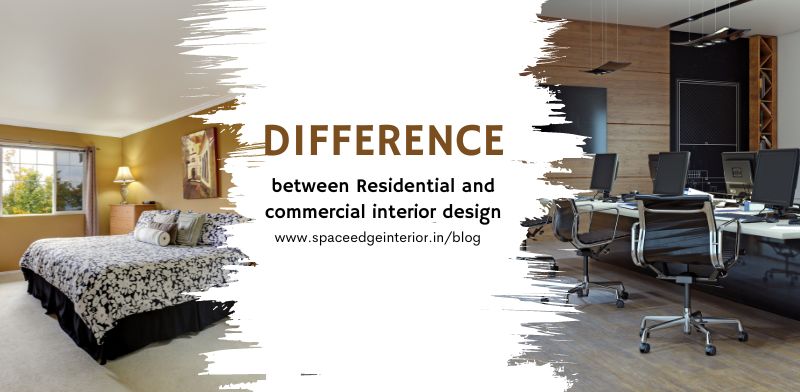Interior design is a broad phrase that refers to everything related to adorning an internal area. Residential interior design considers the design executed in one-family homes, apartments, bungalows and condominiums. Public buildings such as retail stores, Govt. buildings, schools, community centers, offices, hotels & restaurants, and healthcare and fitness facilities are designed in commercial interior design. The experiences these two designers produce represent yet another critical distinction between them. While home designers create cozy places that are personalized for a particular family or person and radiate self-expression, commercial designers take user experience into account. Let’s learn about the difference between Residential and commercial interior design.
- Although there is a lot of overlap between commercial and residential design, user experience is key when creating business spaces. The patient experience, employee experience, and staff experience are all possible connections between these user experiences.
- When end consumers are in a commercial-built environment, they have a certain experience. Visitors need visual signage to guide them as it can be their first time in this building.
- It’s possible that a user needs personal item storage, safe access into and out of the facility, or knowledge of the services the area provides. The end user must be informed about a variety of topics by the commercial designer.
- Commercial clients use interior design to increase customer appeal and improve the working environment for staff. Commercial projects typically have significant traffic and ask for upholstery made of commercial-grade materials, sturdy flooring, and stain-resistant paint. The number of persons in the area is larger, thus it’s crucial that the materials can be cleaned and sanitized, especially in healthcare settings!
- Moving on to home design, it is essential to remember that residential designers primarily construct a place for the end users to live in. Designers interact directly with homeowners in their homes and seek to comprehend both lifestyle and personal style.
- A domestic designer must make careful to incorporate emotional objects into the design. In a home context, designers assist their clients with decision-making about appliances, colour, paint, and finish.
- Residential design is a personal endeavour. These customers frequently have emotional items, which should be thoughtfully included in the design.
- The main concern for home designers is comfort. Building relationships is another essential skill for residential designers, as the house is one of our most intimate environments and where we spend the majority of our time.
In conclusion, choosing the best interior design company is important to assure rapid implementation by understanding the distinction between commercial and residential. In all facets of work, experience, adequate facilities, and skillful labour make a significant impact. Residential interiors just need a few months for planning and implementation, however, commercial interiors may need a longer period of time depending on the project’s size.
